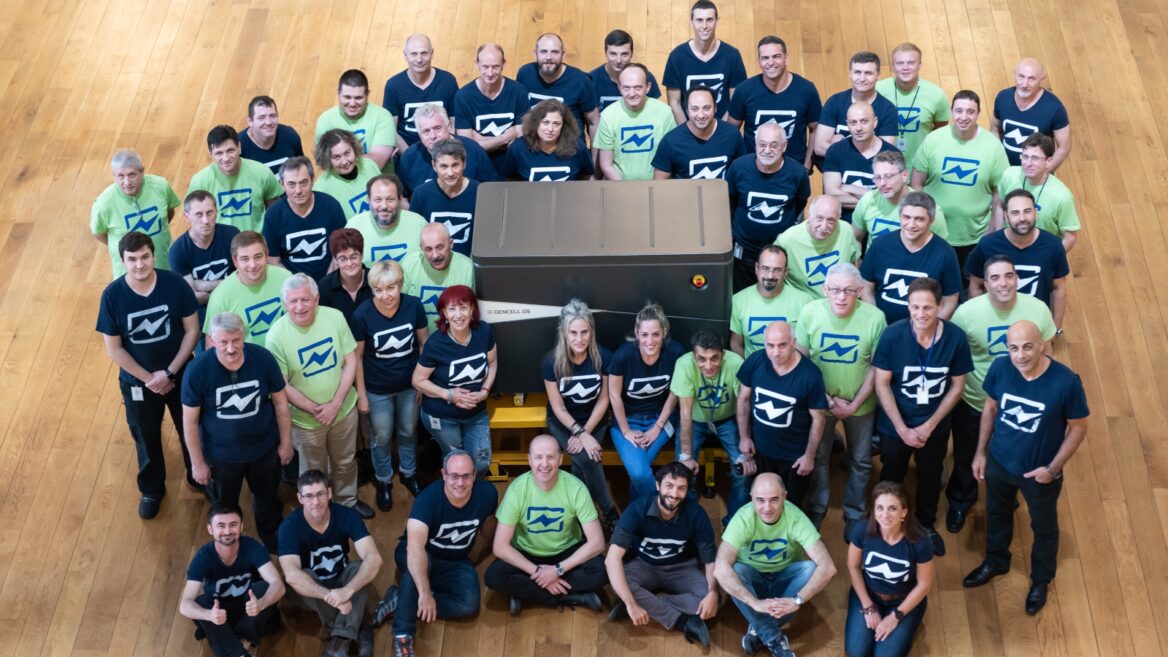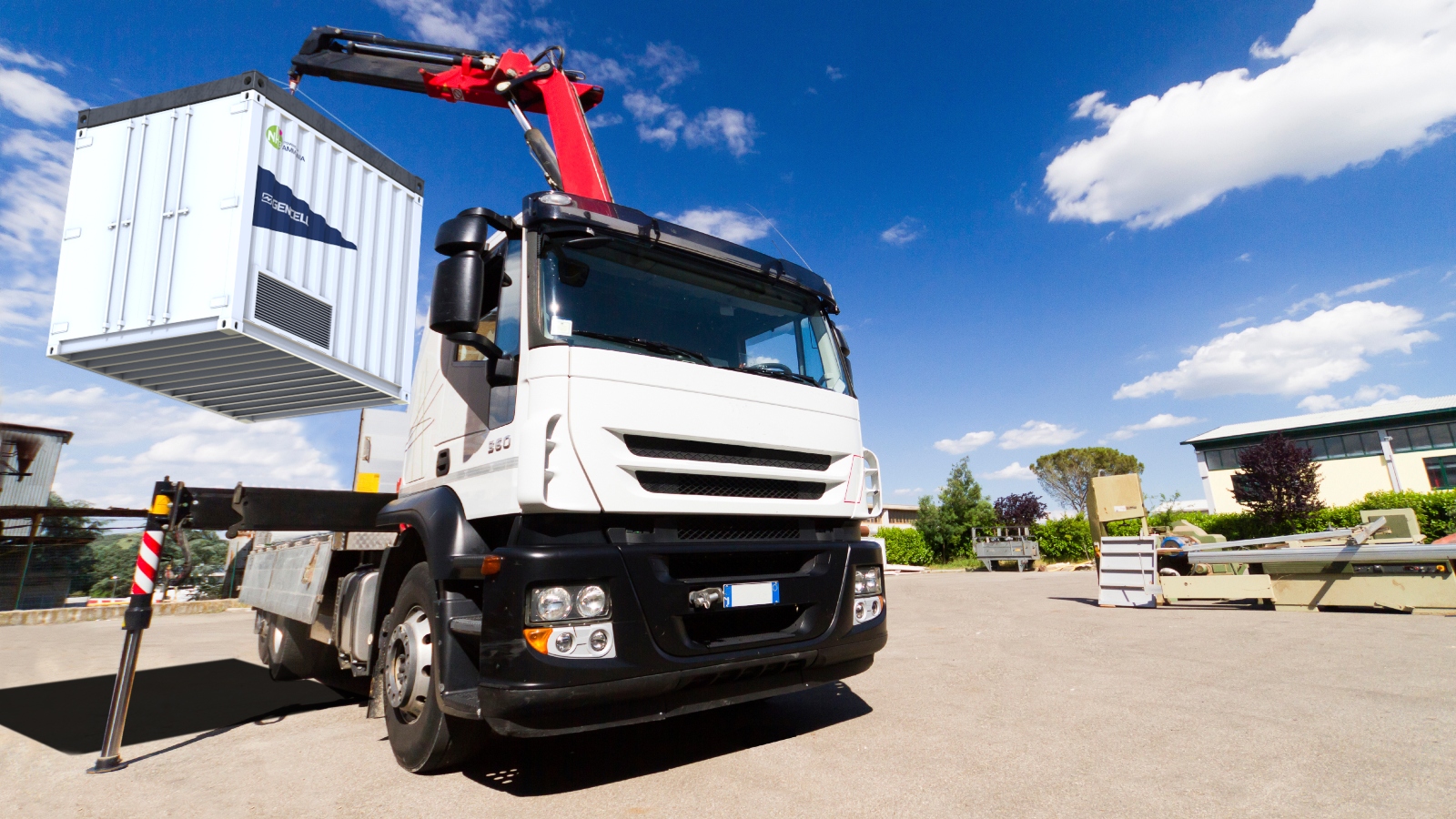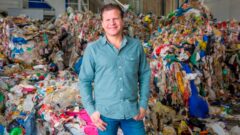
Israeli clean fuel cells aim to slash diesel pollution
GenCell’s hydrogen-powered generators can provide power to people lacking centralized electricity and do good for the environment at the same time.
by Abigail Klein LeichmanIsrael’s GenCell Energy didn’t invent the fuel cell. A Welsh scientist invented that environmentally friendly solution in 1839. Its first commercial use was aboard NASA’s Apollo 11 spacecraft 50 years ago.
“Our vision was that if fuel-cell technology is good for outer space it could be good for Earth,” says GenCell CEO Rami Reshef.
Easier said than done. In the quest for cleaner energy, fuel cells are attractive because they cause zero emissions. They generate electricity via a chemical reaction between hydrogen and oxygen. Water is the only byproduct.
But until now, fuel cells haven’t been economically practical.
In 2010, Reshef and fellow Israel Air Force veteran Gil Shavit met fuel-cell scientist Gennadi Finkelshtain. After emigrating from the former Soviet Union to Israel in the 1990s, Finkelshtain established a pioneering portable fuel-cell company.
Reshef and Shavit decided to join Finkelshtain in his next venture: generators based on fuel cells, aimed at reducing widespread use of highly polluting diesel fuel.
Reshef explains that diesel generators are the only alternative for many of the estimated billion people lacking centralized electricity.
“We thought, if we can power the lives of so many people and do good for the environment at the same time, we’d have a winning formula. That was the logic behind our decision to start GenCell.”
G5 units in 13 countries
Following five years of R&D to maximize efficiency and affordability, in 2016 GenCell introduced the G5 line of hydrogen gas-powered backup generators.
Reshef estimates G5’s running cost is a third to half lower than a diesel generator.
Hydrogen gas is a readily available carbon-free fuel. Some 20 million tons of hydrogen gas are produced annually worldwide for use in refineries, semiconductors and many industrial processes.
Headquartered in Petah Tikva with a US subsidiary, GenCell has sold G5 units to customers in 13 countries so far.
“We have systems running in Europe, Israel, the United States and Southeast Asia, and we’re marketing to Africa and South America,” says Reshef.
“We primarily target the telecom industry — cell towers and base stations — and utilities’ substations. We have also done projects for hospitals, homeland security and several other sectors.”
Hillel Yaffe Medical Center in Hadera recently installed a GenCell G5 to ensure uninterrupted power to the cardiac catheterization unit — and to reduce dependence on diesel backup generators.
Ronen Edry, chief engineer of the medical center, explains that the imaging apparatus used in the CCU sometimes cause power spikes that can lead to a lengthy reboot procedure for supporting equipment.
“If this were to take place during a catheterization process, it could delay the surgery by several minutes with potential risk to the patient,” says Edry. “This was a key factor in our decision to deploy the G5.”
Next up: A5 generator powered by ammonia
GenCell’s second fuel-cell solution, dubbed A5, is in beta testing for use in the estimated 1.2 million off-grid and poor-grid telecom towers around the world.
At the Mobile World Congress last March, this product won the GSMA (Global System for Mobile Communications) Green Mobile Award.
A5 produces hydrogen from liquid ammonia, providing clean, continuous and cost-effective power for rural mobile base stations.

Compared to diesel generators, the GenCell A5 is expected to save operators, on average, up to $250 million across 1,000 towers over a 10-year period.
Reshef says that ammonia is a better choice for GenCell installations in rural areas because transportation is more complicated and costly for hydrogen.
Ammonia is an inorganic chemical used in a staggering number of industries. Some 200 million tons of liquid ammonia is produced annually for agriculture (fertilizer), consumer electronics and appliances (semiconductors), plastic production, deep refrigeration, pharmaceuticals, cosmetics and water purification.
“Ammonia is a well-established chemical with safety rules already in place,” says Reshef. “It’s easy to obtain; here in Petah Tikva we are near a company that produces it.”
Made in Israel
GenCell Energy employs 90 people and has two production lines manufacturing different parts of the G5 and A5. One production line is at its headquarters. The other is in the Israeli branch of US-based Flex (formerly Flextronics).
“This partnership is part of our vision to keep the core technology in Israel while offering accessibility to customers in the rest of the world through the global reach of Flex,” says Reshef.
GenCell’s chairman is Israeli digital-printing pioneer Benny Landa. Reshef met Landa 32 years ago, 10 years after Landa founded Indigo Digital Printing.
In 2002, Landa sold Indigo to Hewlett-Packard for $830 million and then established The Landa Group for nanotechnology research.
“GenCell’s vision to impact the Israeli economy is in line with what Benny’s done with Indigo, keeping all production here even after selling to HP,” says Reshef.
“Part of Benny’s R&D was in energy, and he believes GenCell has fundamental groundbreaking technology that can impact the energy market. The market and the problem are both huge.”
So, although Israelis didn’t invent fuel cells, Israelis did invent a fuel-cell technology that is clean, not dependent on weather — unlike wind or solar – and more affordable than diesel.
“This is what makes GenCell unique,” Reshef says. “Nobody else can compete with diesel in cost. It’s great to be green but if you cannot compete with the alternative economically, it won’t work.”
Looking toward the future, GenCell is working on a hydrogen fuel cell to power public transportation vehicles.
For more information, click here
More about Environment

10 stunning photographs of the Sea of Galilee
By Abigail Klein Leichman
Israel’s water quality to be analyzed by machine vision
By ISRAEL21c Staff
Israeli CO2-eating bacteria could help save the planet
By Abigail Klein Leichman
New technology turns everyday trash into plastic treasure
By Washington Post
Smartphones can be used to predict forest fires
By Racheli Wacks
Israeli wheat exhibit stirs up big emotions in Tokyo
By Abigail Klein Leichman
Israeli soldiers save badger stuck in Syria border fence
By Daniel Ben Tal
Israeli tech can curb water waste in multifamily homes
By Abigail Klein Leichman
Israeli students win award for making honey without bees
By Brian Blum

25 years of birdwatching at Jerusalem’s urban observatory
By Abigail Klein Leichman
Turns out mice have personality, and now there’s a way to measure it
By ISRAEL21c Staff
The village that’s been vegan for 50 years
By Abigail Klein Leichman
How a smart pivot saved an Israeli solar-energy startup
By Brian Blum
Israeli solution prevents bridge and tunnel disasters
By Abigail Klein Leichman
New invention to make hospital bedding germ-resistant
By Brian Blum
New sensor technology combats oil pollution
By Noa Rubin for Zavit Science and Environment News Agency
Buy fresh unsold food from restaurants; save money and waste
By Abigail Klein Leichman
Two solutions to stop male chick slaughter win startup prizes
By Abigail Klein Leichman
Clean up your indoor air with green walls, and grow veggies
By Brian Blum